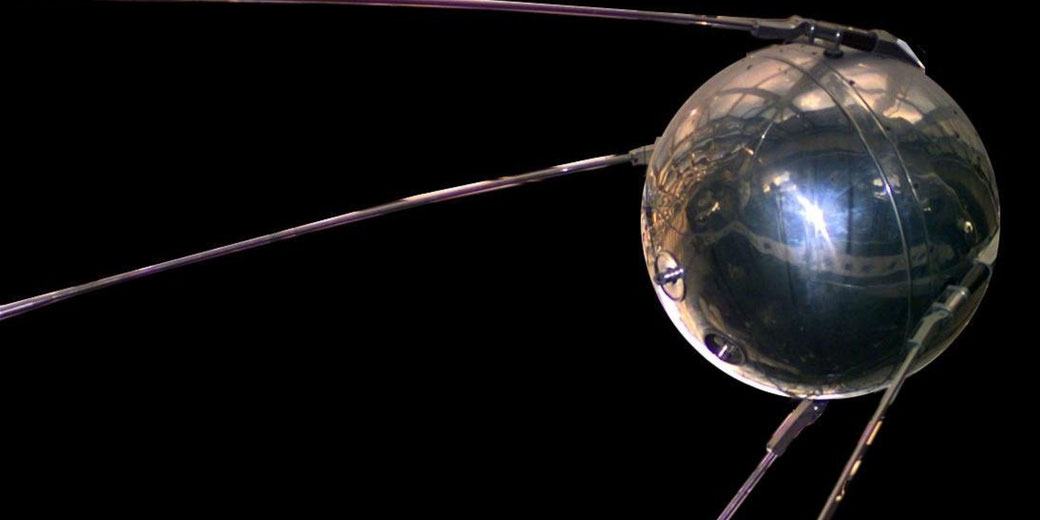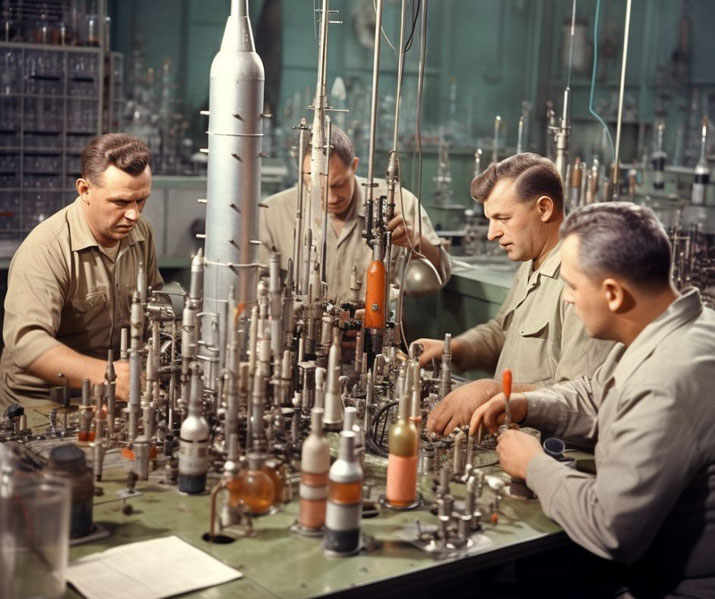The story of Sputnik: how one soviet satellite changed everything

The twentieth century was a time of extraordinary breakthroughs and astounding discoveries, but few events can rival the awe-inspiring launch of the first artificial satellite, Sputnik.
On October 4, 1957, a metallic sphere no larger than a beach ball made history, heralding the advent of the Space Age and forever changing our perspective of our place in the universe.
Sputnik was more than a marvel of engineering; it was a harbinger of a new era of human innovation, a symbol of human aspiration pushing the boundaries of the possible.
The echo of its radio signal, transmitted from above the Earth's atmosphere, resonated around the world, both literally and metaphorically.
It signified not only the commencement of space exploration, but also precipitated a profound shift in global politics, policy, and public sentiment.
The Cold War setting of Sputnik
The backdrop to the story of Sputnik is the geopolitical landscape of the mid-twentieth century, a period dominated by the ideological, political, and military rivalry between the two superpowers, the United States and the Soviet Union.
The competition between these nations, known as the Cold War, extended beyond earthly concerns, gradually turning their gaze towards the uncharted expanses of space.
This pursuit was not just a romantic quest for exploration, but rather a race for supremacy, each milestone an assertion of technological superiority and geopolitical dominance.
The space race was, in many ways, an extension of this Cold War rivalry, and it was in this context that the Sputnik project took root.
In the years following World War II, a rapid progression in rocket and missile technology had taken place, driven by military objectives.
German engineer Wernher von Braun, a pioneer in rocket technology, had been taken to the United States to work on missile development under Operation Paperclip.
Meanwhile, the Soviet Union had also procured German rocket technology and expertise.
Both nations began testing increasingly powerful rockets, some capable of reaching the fringes of space.

By the mid-1950s, both the United States and the Soviet Union had announced their intention to launch artificial satellites into Earth's orbit as part of their participation in the International Geophysical Year (1957-1958), a global scientific project aimed at understanding Earth's physical properties.
However, few could anticipate the profound impact that these efforts would soon have on the world.
Concept and design of Sputnik
The birthplace of Sputnik was the Soviet Union's burgeoning space program, more specifically the secret research facility now known as the Sergei Korolev Rocket and Space Corporation Energia.
The ambitious project was helmed by the brilliant and visionary Chief Designer, Sergei Korolev.
He, along with a team of scientists and engineers, conceptualized and brought Sputnik to life.
Sputnik, named from the Russian word for "traveler" or "satellite", was an elegantly simple and robust design.
It was a spherical object measuring just 58 centimeters in diameter, roughly the size of a beach ball, and weighed about 83 kilograms.
The choice of a spherical design was strategic - the sphere is a shape with the minimum possible surface area for a given volume, which meant it could withstand the intense pressure during launch and in the space environment.

The body of Sputnik was made of highly polished aluminum alloy to reflect sunlight and was composed of two separate hemispheres that were bolted together.
The satellite's exterior was punctuated by four external radio antennas, deliberately designed to be longer than the sphere's diameter.
These antennas, protruding from one side of the sphere, transmitted radio signals back to Earth.
The signals were simple beeps, which didn't contain much data but provided evidence that the satellite was operational.
Unlike many modern satellites, Sputnik carried no scientific instruments due to its small size and the technological limitations of the time.
It was equipped with a radio transmitter, a battery, a fan for temperature regulation, and systems for maintaining orientation and pressure.
Its primary purpose was to prove that artificial objects could be placed into orbit around the Earth.
Launch of Sputnik 1
The launch of Sputnik 1 on October 4, 1957, marked a turning point in human history.
Lifted into orbit by an R-7 Semyorka, the world's first intercontinental ballistic missile, Sputnik became the first artificial satellite to orbit the Earth.
This momentous occasion signaled the beginning of the Space Age and the era of human space exploration.
The preparations for the launch were undertaken in absolute secrecy at the Baikonur Cosmodrome, located in the remote desert steppe of Kazakhstan.
As the clock ticked towards the predetermined launch time, the team led by Sergei Korolev watched with bated breath.
At 10:28 pm Moscow Time, the R-7 rocket roared to life, lifting off the launch pad and streaking across the night sky.
Just a few minutes later, the final stage of the rocket shut off, and Sputnik was released into orbit.
Sputnik 1 was inserted into an elliptical low Earth orbit with an apogee (farthest point from Earth) of about 947 kilometers and a perigee (nearest point to Earth) of about 227 kilometers.
The satellite, moving at a speed of about 29,000 kilometers per hour, completed an orbit around the Earth approximately every 96 minutes.
Upon successful deployment, Sputnik began transmitting signals back to Earth.
The simple "beep-beep-beep" sounds were captured by radio operators around the globe.
Despite carrying no scientific instruments, the data collected from the satellite's radio signals—chiefly its temperature and pressure—was invaluable.
It demonstrated the feasibility of transmitting data from space to Earth, paving the way for all future telecommunications and data-gathering satellites.
The Sputnik 1 mission lasted 21 days, from October 4 to October 26, 1957, until the transmitter batteries exhausted.
However, the physical satellite continued to orbit the Earth for several more months before it gradually fell back into the Earth's atmosphere and disintegrated on January 4, 1958.
American panic and global reactions
The launch of Sputnik had a far-reaching and immediate impact on global politics.
This single event symbolized Soviet technological prowess and demonstrated their ability to launch intercontinental ballistic missiles, a revelation that sent shockwaves around the world, particularly in the United States.
The event, now referred to as the 'Sputnik Shock,' triggered a wave of anxiety and introspection in the United States.
Suddenly, the perceived balance of power had been upset. The Soviet Union, not the United States, had emerged as the apparent leader in the rapidly advancing field of space technology.
This was a direct challenge to America's post-World War II image as the most technologically advanced nation.
It led to a critical examination of the U.S.'s education system, particularly in the areas of science, technology, engineering, and mathematics (STEM), and led to a significant increase in federal funding for scientific research and education.

The Sputnik launch, in many ways, signaled the formal beginning of the Space Race, an intense competition between the Soviet Union and the United States to achieve superiority in space exploration.
This competition led to a rapid acceleration in technological advancements, with each side striving to outdo the other.
The following years saw a flurry of space missions, each one more ambitious than the last, culminating in the Apollo moon landing in 1969.
Politically, the event also had the effect of raising the stakes in the Cold War. It heightened the urgency to negotiate international space treaties, resulting in the Outer Space Treaty of 1967, which laid the foundation for the legal framework regulating international space activities.
In response to the Sputnik launch, the U.S. government underwent significant reorganization to catch up in the Space Race. Most notably, this included the establishment of the National Aeronautics and Space Administration (NASA) in 1958, which marked a major turning point in the U.S.'s approach to space exploration.
The launch of Sputnik 2 and beyond
Just a month after the historic launch of Sputnik 1, the Soviet Union once again made headlines with the launch of Sputnik 2 on November 3, 1957.
While the launch of the first Sputnik was groundbreaking, Sputnik 2 took a giant leap further.
It was significantly larger and more complex than its predecessor and carried the first living passenger into space: a dog named Laika.
The design of Sputnik 2 was more complex than that of Sputnik 1. It weighed approximately 508 kilograms, a considerable increase from Sputnik 1.
The satellite was composed of several compartments, including a sealed cabin for Laika, a unit with scientific instruments for biological research, and a power supply system.
Tragically, technology to safely return living beings from orbit had not yet been developed, and Laika did not survive the mission.
The Sputnik 2 mission highlighted the ethical complexities of space exploration and raised questions about the treatment and safety of animals in scientific research.
Despite the tragic outcome for Laika, the mission provided valuable, albeit rudimentary, data on living organisms' responses to spaceflight conditions.
This ultimately paved the way for human spaceflight.
The success of Sputnik 1 and 2 spurred a series of subsequent Sputnik missions, each more advanced and complex, culminating in Sputnik 5, which safely returned dogs Belka and Strelka from space in August 1960.
These missions showcased the rapid advancements in space technology and the Soviet Union's leading role in the early years of space exploration.
Beyond the Sputnik series, the Soviet Union continued to achieve significant milestones in space exploration, including the first successful human spaceflight by Yuri Gagarin aboard Vostok 1 in April 1961.
Later, they achieved the first woman in space, Valentina Tereshkova, aboard Vostok 6 in 1963, and the first spacewalk by Alexey Leonov in 1965.
These advancements were made possible by the technological and scientific groundwork laid by the Sputnik missions.
What do you need help with?
Download ready-to-use digital learning resources
Copyright © History Skills 2014-2025.
Contact via email
With the exception of links to external sites, some historical sources and extracts from specific publications, all content on this website is copyrighted by History Skills. This content may not be copied, republished or redistributed without written permission from the website creator. Please use the Contact page to obtain relevant permission.





